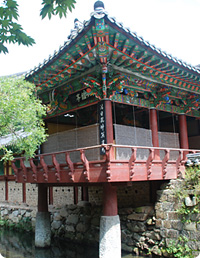PACKAGE
Namdo Odyssey 11 days
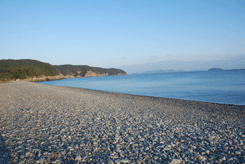
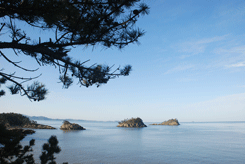
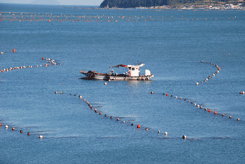
Tour Highlights
- Gyeongbokgung Palace
- National Folk Museum of Korea
- Namdaemun Market
- Songsanri Tombs
- Gongju National Museum
- Buyeo National Museum
- Jeongrimsa Pagoda
- Saemangeum Sea Wall
- Gochang Dolmen
- Jeungdo Island
- Jaeundo Island
- Amtaedo Island
- Aphaedo Island
- Mokpo
- Wando Island
- Yeosu Cruise
- Hwaeomsa temple
- Jeonju Hanok Village
Click on the days to access the programs quick
| Days | Visits and Activities | Distance |
| Day 1 | Arrive Seoul | 60km |
| Day 2 | Seoul | |
| Day 3 | Seoul - Gongju - Buyeo | 170km |
| Day 4 | Buyeo - Saemangeum - Gochang - Jeungdo | 250km |
| Day 5 | Jeungdo | |
| Day 6 | Jeungdo - Jaeundo - Amtaedo - Aphaedo - Mokpo | 80km |
| Day 7 | Mokpo - Haenam - Wando | 140km |
| Day 8 | Wando - Gangjin - Boseong - Yeosu | 230km |
| Day 9 | Yeosu | |
| Day 10 | Yeosu - Gurye - Jeonju | 390km |
| Day 11 | Departure | 60km |
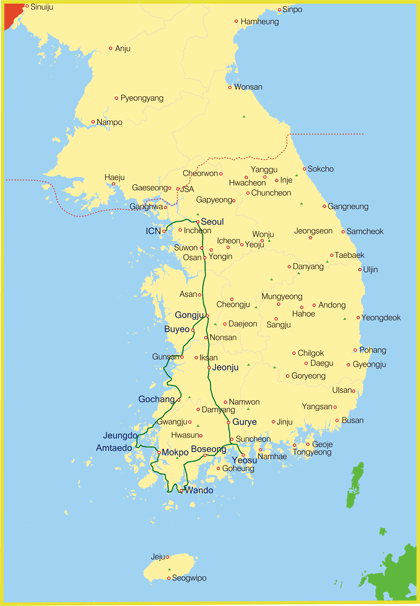 Day 1 Arrive Seoul (- - -) 60km
Day 1 Arrive Seoul (- - -) 60km
Touching down at Incheon International Airport places you in the heart of Korea. After you clear Passport and Customs control, you will be welcomed by the tour guide and then transferred to your hotel.
Day 2 Seoul (B)
Your exploration this morning begins with a driving tour of Seoul, featuring sites such as Seoul Plaza, City Hall, Cheonggye Square and pedestrian-friendly Gwanghwamun Plaza that is hemmed in on both sides by rushing traffic and office buildings. The plaza is lined on each side with 365m long streamlets, two centimeters deep and one meter across, the stone bed of the plaza's east side waterway engraved with important events in chronological order from 1392 to 2008.
Step back in time to when life was gracefully slow and discover Gyeongbokgung Palace, a particularly charming spot that represents a colorful and turbulent side of the capital's 500-year history. Depending on timing, you may witness the Royal Guard Changing Ceremony featuring parade, password verification, duty shift and patrolling the gate. Accompanied by a court band with its colorful costumes and royal flags, the ceremony is performed daily basis at 10:00 and 14:00 except Tuesdays, although it is cancelled in case of rain or extremely hot or cold weather.
Your visit to the National Folk Museum of Korea will familiarize you with wealthy culture of this friendly and picturesque nation. It is an excellent facility to illustrate the history of traditional life of the Korean people from the prehistoric age to the Joseon dynasty. The permanent exhibition features life and work, costumes and ornaments, handicrafts and technology, educations, living quarters, dietary life, oriental medicine, performing arts and games, beliefs and rituals, and socio cultural life.
Visit The War Memorial of Korea that showcases Korea's military history and provides a comprehensive overview of the Korean War. Outside of the museum on the hallway, names of fallen soldiers from the Korean War allies inscribed in large granite placards. Pay tribute to every soldier who made the ultimate sacrifice for the world peace. The memorial houses over 13,600 items in six halls under different themes: Memorial Hall, War History, Korean War, Expeditionary Forces Room, ROK Armed Forces Room, and Large Equipment Room. Each room is full of real and replica artifacts, dioramas, records and videos which are very interactive and easy to understand. This memorial is a good mix of outdoor exhibit that is one of the largest displays of military hardware. The Statue of Brothers that is based on the dramatic true story stands tall for all to see, reflecting the wish for peace and unification.
At Seodaemun Prison, learn about the dark side of Korean history under Japanese colonial rule. This prison is one of many others to be built to calm the patriots and independence leaders. Today, seven of them including three death chambers are preserved as a museum.
Before you end the day's sightseeing, you will tour the centuries-old Namdaemun Market brimming with well over 11,000 shops selling anything you can imagine. One of the most colorful aspects of the market is an endless sprawl of street-vendor stalls that setup in the alleys and walkways between the buildings. The market is seriously crowded, so be prepared to get bumped around. A fantastic place to haggle over the price to get the best deal on something you want or simply admire the vibrancy of this massive market.
At the western entrance of the market in the middle of a traffic circle stands Sungnyemun. It is a formidable and iconic construct that served as the southern gate of the wall that surrounded Seoul during the period of the Joseon Dynasty.
Day 3 Seoul - Gongju - Buyeo (B) 170km
Gongju is a charming city that once served as the Baekje's capital for 63 years from 475 to 538. Visit Gongju National Museum and get a glimpse of the fascinating archaeological articles from Baekje era, and artifacts excavated from the royal tomb of King Muryeong (501-524), one of the last rulers to reign in the capital of Gongju. Near museum is Songsanri Tombs, a group of royal tombs that just look like a cluster of grassy knolls. The tomb which belongs to King Muryeong (462-523) and his wife, the queen was found completely intact since it was sealed in the early 6th century. The actual tomb was permanently closed, but you will see an excellent, albeit miniature duplicate.
Buyeo is a melting pot of Baekje culture which is often regarded as the most artistically sophisticated of the Three Kingdoms. Today, you will explore archaeological sites and ancient historic areas, which were collectively named as a UNESCO World Heritage sites. Gungnamji is the Korea's oldest artificial pond dating back to 634. Ringed by weeping willow trees, it creates a colorful spectacle with its stock of water lotuses in summer. Jeongrimsa temple site with its five-storied stone pagoda recalling the glorious past is one of the city's most distinctive and outstanding landmarks.
At Buyeo National Museum, you will feel the spirit and the essence of the brilliant Baekje culture as you appreciate the beauty of the archaeological relics. A beautiful gilt bronze incense burner is impossible to miss. Crafted over 1,500 years ago, it shows a graceful dignity and the elaborate skills of Baekje craftsmen.
Day 4 Buyeo - Saemangeum - Gochang - Jeungdo (B) 250km
Today, you will drive over a 33.9km long dyke, the world's longest man-made dyke linking two headlands between the industrial port city of Gunsan and Buan. You will tour the Gochang Dolmen Museum providing a comprehensive information about Dolmen with its theme park featuring a life-size village replica. It is an excellent facility that gives visitors an idea of Bronze Age culture, including quarry, transportation, construction, burial and tomb formats, rituals, relics excavated in Gochang, and life of the pre-historic people. Near the museum is UNESCO World Heritage stie of Dolmen Park, the largest concentration of dolmens perhaps anywhere in the world. A total of 447 dolmens of various types are scattered at the foot of a series of hills. Generally, the capstones of the dolmens are around 1 to 5.8 m in length and may weigh up to 225 tons.
As you cross Chilsandaegyo bridge, you are invited to the Muan and Sinan county . The Shinan Islands are often promoted as the ‘1,004 Islands’ but apparently the Sinan county consists of 111 inhabited islands and 719 uninhabited islands, which make up about a quarter of all the islands in South Korea. The Sinan County is rich in ecological resources and places of outstanding natural beauty. Several wetlands and mud flats have been designated under the Ramsar Convention and the UNESCO Biosphere Reserve. So much that a visit will ‘cure your mind and body from the daily hustle and bustle.
Day 5 Jeungdo (B)
Small rural island has in general this capacity to slow you down. Jeungdo island is the Asia’s first Cittaslow and is a very locale where, In August 1975, a fisherman landed an unusual catch off the coast. In his fishing net were six ceramic vessels including celadons - or pottery made with celadon glaze dating back to the 14th century Yuan Dynasty China. This prompted people to say that there must be a shipwreck with more prized relics buried deep in the muddy seabed off the island of Jeungdo. A year later, archaeologists launched an underwater salvage operation which continued until 1984. Korea’s largest underwater excavation discovered some 24,000 pieces of artifacts that offer a look at the cultural exchange and maritime trade in East Asia.
Spend the day admiring the beautiful coastline and salvation spot of the ship, with a visit to the Salt Museum that is unique on this island. See the halophyte garden as you make a short trekking. You will have time to relax at Ujeon Beach. With its silvery white sand as well as the view of the sealine dotted with over 90 deserted islands making the beach one of the most attractive seaside destinations.
Day 6 Jeungdo - Jaeundo - Amtaedo - Aphaedo - Mokpo (B) 80km
Today, you will hop the islands. Depending on tide condition, about 20 minutes ferry service takes you to the neighboring island of Jaeundo. When the air becomes light and fresh, it becomes a wonderful contemplative environment during that time, with a great display of Korean traditional rural community life. From sunrise to sunset the display of light in combination with the islands, the calm ocean, the wind, island life, and hills, effortless refreshes your mind and soul. A couple of murals are found on Jaeundo and Amtaedo islands. Gijeongsamgeori is one of the key spots in Amtaedo island with its unusual mural. Known as Camellia Perm, many come to visit and make photos. Enjoy a drive over the 1004 Bridge connecting Amtaedo with the island of Aphaedo and finally mainland.
While in Mokpo, visit excellent National Research Institute of Maritime Cultural Heritage and learn about the impressive artifacts recovered from underwater excavations of shipwrecks. The main exhibition includes skeletal hull of a replica wooden ship from the Goryeo dynasty along with over 3,000 excavated relics from Wando and miraculously intact ceramics from the famous kilns of Gangjin. And of course the remains of the 14th-century Chinese ship discovered in 1975 in Jeungdo and over 22,000 recovered pieces of pottery - the primary source of the museum's artifacts. The exhibition also includes Life of a Korean Fishing Village, with displays of traditional and modern fishing methods.
Day 7 Mokpo - Haenam - Wando (B D) 140km
Squeeze in a rime to stop at Yudsalsan Park. Rising at 228m, the park boasts a panoramic view of the entire city of Mokpo and the sea. You will tour the Nojeokbong and a statue of Admiral Yi Sunsin stands ? this is the landmark where admiral Yi is said to have fooled and scared away the Japanese troops by stacking straw thatches over the rocks making their small army seem like a much larger one. Next up is Usuyeong where admiral Yi won over Japanese troops in the 16th century. First phase (north flowing current) Early in the morning of October 26, 1597, the huge Japanese fleet was spotted by Yi's scouts as they deployed around the small bay on the southern end of Myeongnyang strait. Admiral Yi's fleet then redeployed out of their base in Usuyeong to block the northern end of the strait. Yi described about "...200 enemy ships... flowing [into the strait]" and at least 133 ships in his immediate vicinity. It is estimated that at least 133 ships were combat warships and that some 200 ships immediately behind were logistical (supply and troop carrying) support ships. In Japanese records, the ships at the front of their formations were the middle class warships called Seki-bune, as the Japanese fleets by this time understood the devastating offensive capabilities of the main Korean warships which were near the strait.
Yi's warships deployed on the northern end of the strait and dropped anchor. Yi in his flagship advanced upon the vanguard of the Japanese fleet, which was commanded by Kurushima Michifusa. For a time only the flagship fought in the battle. The crews of the Joseon fleet were made up of survivors from Chilchonryang and they were still badly shaken and intimidated by the overwhelming size of the Japanese fleet. Yi said in his diary: "My flagship was alone facing the enemy formation. Only my ship fired cannons and arrows. None of the other ships advanced, so I could not assure our outcome. All other officers were seeking to run, as they knew this battle was against a massive force. Ship commanded by Kim Eok-chu, the Officer of Jeolla Right province, was 1~2 majang (1 majang: approximately 390 metres) away." For a time it looked like Yi's flagship was "... standing like a castle in the middle of the sea."
The flagship's ability to hold out against the Japanese vanguard eventually gave heart to the rest of Yi's fleet and small groups of his ships came to his aid. First came a ship commanded by local magistrate An Wi and then several ships commanded by central squadron leader Kim Ung-ham. Seeing the success of the flagship and the handful of other boats, the rest of Yi's fleet joined in the fight.
The second phase (south flowing current) The tide soon shifted and the Japanese ships began to drift backwards and collide with each other. In the confusion, Admiral Yi ordered his ships to advance and press the attack, ramming 30 Japanese ships. The dense formation of Japanese ships crowded in the narrow strait made a perfect target for Joseon cannon fire. The strong tides prevented those in the water from swimming to shore, and many Japanese sailors who abandoned sinking or damaged ships drowned in the currents. By the end of the battle, approximately 30 Japanese warships were sunk.
Enjoy a short stop at the southernmost area of the Korean peninsula. It is also called Tomal, all of which mean "the edge of the land" in Korean.
Wando island has long been famous for laver and abalones farming. Weather and Farm conditions permitting, you will tour one of the farms to get a glimpse of the functioning farm. Seaweed Center features anything about the seaweed and the ocean environment of Wando as an optimum site for seaweeds to grow. Fiishing Village Folk Exhibition Center showcases the life in fishing village, fishing methods, status of maritime farming and the cultures of fishing village including the history of development of ships. Check out the fish market. Wando Tower displaying beautiful scenery of archipelago is also included.
You are treated to Wando's super food, abalone grown from sea mustard and kelp in clean water. Wando, with clean sea and abundant seaweed, is the origin of abalone that produces over 80% abalones in Korea. Abalones from Wando have special taste and nutrition as they grow in the optimal condition. Abalone has rich content of minerals and vitamins, and it is known as the storage of proteins as it has low fat and high proteins. It has been known from the old times as the best health supplement and nutritious food. Abalone can be served raw, steamed, raw soup or grilled and even common dish will become special if abalone is added.
Day 8 Wando - Gangjin - Boseong - Yeosu (B) 230km
Journey to Gangjin, a home to traditional Korean Celadon. Visit Gangjin Celadon Museum, an excellent facility for an introduction of the Korean celadon. Nearby is a functioning kiln, and you may have a chance to view the reproduction of the celadon. The Holland sailor Hamel's crew members were detained in Gangjin for 8 years in the 17th century.
Boseong is known as the home of tea, hemp clothes and Sori or a Korean traditional genre of singing. A number of tea plantations where the carefully trimmed tea trees stretch endlessly over steep mountain slopes - a lush green carpet that is a sight to behold. A short walk along the path lined with cedar trees that had been planted to block the wind leads you to the tea plantation delightfully accommodating visitors. The tea bushes rising in regular curves are great. Here, you will freely roam the hills, walk between the rows of bushes and take pictures of each other at every bend.
Yeosu is renowned for its beaches, idyllic islands and colourful historic sites. Yeosu has an archipelago of more than 300 picturesque islands surrounding it, many of which are uninhabited. The city’s shoreline is adorned with cliffs, islands and peninsulas, providing numerous look-out points with spectacular views. You are treated to the the beautiful nightscape formed with more than 10 thousand colorful lights installed on the Industrial Complex combined with the city lights - a fantastic harmony with the shining lights that light up when night visits. Yeosu hoted Yeosu Expo 2012, themed around protecting the ocean and climate change. Of the massive Expo complex, Big O is an iconic structure. BIG O SHOW is an apparently the world’s largest light and water fountain show that takes place except Mondays.
Day 9 Yeosu (B)
Yeosu itself is nothing special to look at but the natural surroundings offer some spectacular sights along the jagged coastline. Yeosu is definitely a hidden gem when it comes to scenery. Enjoy Cable Car connecting the 1.5km between Yeosu Dolsan and Jasan Park mainland over the ocean. Then, followed by well over one hour cruise offering a scenic coastlines, bridges, islands and cityscapes. Dolsan Park in the city will offer views to remember. You may stop off at the Hamel Park. Dutch sailor Hamel and his seven crew members made their escape from Yeosu on September 4. 1666 after 13 years and 28 days detention. Hamel Lighthouse stands tall in a small port and a bit further from the lighthouse is a statue of Hamel. At the fish market, you cannot but help notice the region's abundant resources in terms of seafood and fish resources.
Enjoy an unforgettable journey through the coastal beauty of Yeosu!
Start your adventure aboard Yeosu Cruise, where you can take in panoramic views of the deep blue sea, scattered islands, and Yeosu’s most famous landmarks, including Odongdo Island, Dolsan Bridge, and EXPO Marine Park. The gentle sea breeze and beautiful skyline create the perfect atmosphere for photos and relaxation.
After the cruise, continue your sightseeing with a ride on the Yeosu Maritime Cable Car, one of Korea’s most scenic attractions. Glide above the sparkling waters between Dolsan Island and the mainland, enjoying spectacular aerial views of the coast and city below.
Day 10 Yeosu - Gurye - Jeonju - Seoul (B) 390km
The journey continues to Gurye for a visit to the 6th century Hwaeomsa. The whole atmosphere of the temple is sublime and the wooden structures give it a real earthly feel, very calming. The temple is dedicated to the vairocana Buddha, the cosmic head of the Hwaeom trinity. First, One-Pillar Gate standing at the lower part greets you and leads you up to the second and the third gate - from the secular world into the spiritual world. On the second level, there is the Bojeru, the Save All Beings Hall, beside which stands bell and drum tower. And on its ground stands two magnificent 5-story stone pagodas from Silla period that adorn the temple.
Gakhwangjeon has a double storied roof and houses seven figures on its altar. Sakyamuni Buddha sits in the middle attended by Amitabha and Prabhytaratna, as well as Avalokitesvara, Samantabhadra, Manjusri, and Ksitigarbha. You check out the largest stone lantern on the Korean peninsula that is designated National Treasure out in front of this hall. And up from the left of Gakwhangjeon hall, a steep set 108 uneven stairs on the hillside stands the Three-Story Stone Pagoda supported by four lions each of which represents the four primary human emotions: love, sorrow, anger and joy. Here, you will enjoy the intricacies of this masterpiece as there are numerous other designs etched onto the pagoda.
Jeonju boasts a time-honored tradition as well as significant cultural and artistic heritage. There's a plenty of history and artifacts of many kinds to go around. Explore Jeonju Hankok village, a Korean House complex retaining much of their perfection intact.
Day 11 Departure (B) 60km
After this wonderful trip exploring Korea and with time to reflect on your surprise in your experience, you will return to Incheon International airport in time for your flight. By boarding, you are already high above Incheon heading for home.





